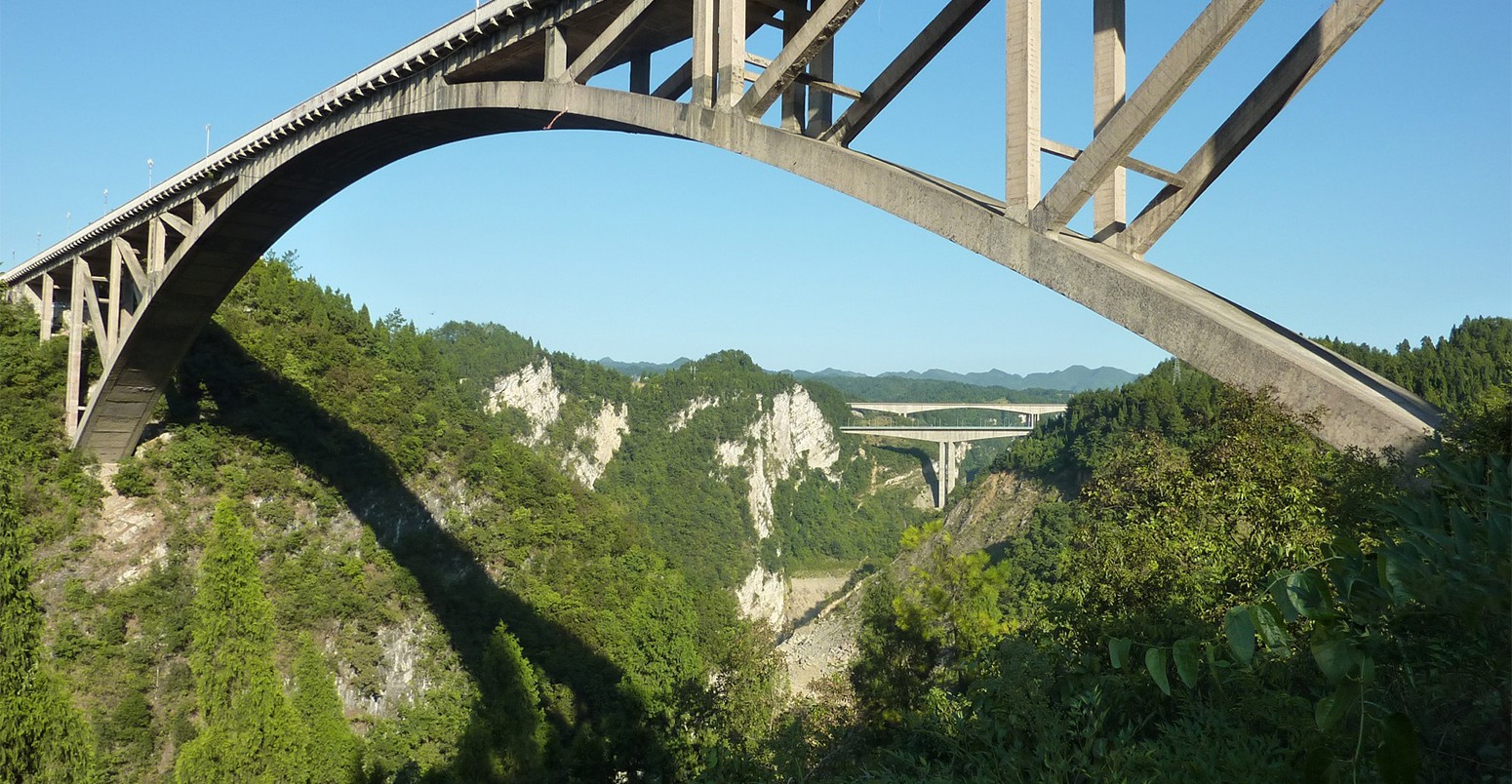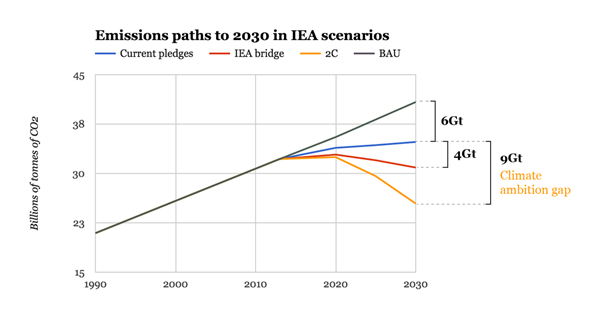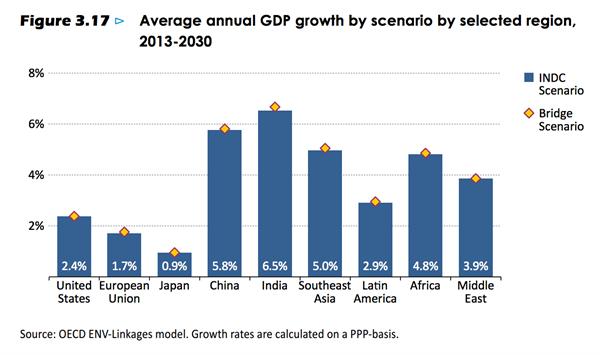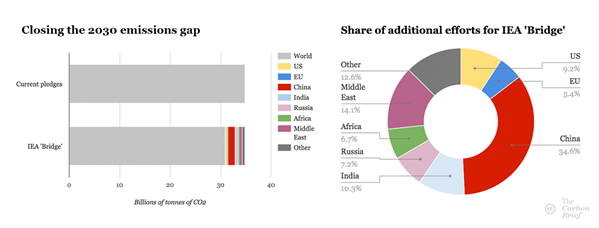
IEA: China has greatest potential to raise climate ambition
Simon Evans
06.17.15Simon Evans
17.06.2015 | 3:30pmUpdate 18/6: A previous version of this article was headlined “IEA: China should shoulder greatest burden”. The IEA has asked us to clarify that neither its special report nor its ‘bridge’ scenario are prescriptive. The scenario highlights the potential for cost-effective emissions reductions, much of which is in China. We have amended wording to reflect this.
The world is not on track to avoid dangerous climate change and China has the greatest potential to close the gap in climate ambition, according to the International Energy Agency (IEA).

In a special report on energy and climate change the IEA has added up the combined impact of current climate pledges and other likely policies, including China’s hotly anticipated contribution for the post-2020 period.
Dr Fatih Birol, IEA chief economist, says in an interview with Carbon Brief that these pledges are far from what would be needed to limit warming to below 2C. We’ve taken a look at which countries would make the biggest contribution to bridging the gap towards 2C, under the IEA’s cost-neutral bridge scenario.
Climate ambition gap
The climate ambition gap is widely recognised. Last week, UN climate chief Christiana Figueres told Carbon Brief it was “completely clear” that current pledges would be insufficient to avoid 2C of warming above pre-industrial temperatures over the course of the century – the internationally agreed climate target.
The IEA’s new assessment suggests they would instead put the world on track for 2.6C by 2100 and 3.5C after 2200. Their long-term impact may be “rather small”, says Birol, but that’s largely because they extend at most 15 years out to 2030.
The pledges collectively bend the world’s emissions trajectory (blue line, below) away from business as usual emissions (green line) by 6 gigatonnes of carbon dioxide (GtCO2). Even in the short term, however, the gap between the pledges and what would be needed for 2C (yellow line) grows rapidly, reaching 9GtCO2 in 2030.

Emissions growth under the IEA’s ‘current policies’ scenario, corresponding to business as usual (BAU), compared to the path with current climate pledges, the IEA’s bridge scenario and a scenario consistent with 2C. Source: IEA special report on climate and energy, IEA World Energy Outlook 2014. Chart by Carbon Brief.
Raising ambition
The IEA has come up with five policies to start closing that 9GtCO2 gap in what it calls a ‘Bridge’ scenario. This would see emissions peak by 2020 and would close half the ambition gap in 2030, ending up 4GtCO2 below emissions expected under current climate pledges. But it’s still only a bridge because more effort would be required for a 2C world. Birol tells Carbon Brief:
“Since [current pledges] are not bringing us to where we want to go, we want to build a bridge [with] five major policy initiatives, which can be implemented tomorrow with no economic cost and with no new discovery of new technologies”.
He says the policies were “very carefully chosen…so no-one can say the economy will be harmed”. To emphasise this, the IEA includes a graph of economic growth in each region of the world, showing that, if anything, its bridge scenario would provide a small boost to GDP.

Economic impacts of the IEA ‘Bridge’ scenario compared to current climate pledges (INDC scenario). Source: IEA special report on climate and energy.
The IEA says four of the five policies in its bridge scenario – on boosting efficiency, banning inefficient coal, ending fossil subsidies and tackling upstream methane – have been endorsed by the ministers of all IEA member governments, including the US, UK, Germany and Japan.
Perhaps significantly, China, India, Saudi Arabia and Indonesia are not members. However, the report was guided by a high-level advisory panel, including experts from China, India, the African Union and a former secretary general of the oil cartel OPEC,
Country contributions
Each of the bridge scenario policies would be implemented worldwide, the IEA says, with the level of ambition in each country or region adjusted to ensure no net economic costs. This means the scenario is looking for the most cost-effective ways to reduce emissions rather than trying to adjudicate on the vexed question of what is the fairest or most equitable approach.
As a result, the emissions savings in the IEA’s bridge scenario come from some unexpected places. China has by far the largest potential if the bridge were implemented, with a 1.4GtCO2 emissions reduction by 2030 compared to its expected trajectory (red areas, below). This is 35% of the total 3.9Gt saving highlighted by the IEA (below right).

Left: Global energy-related emissions in 2030 under current pledges (INDC scenario) and the IEA’s bridge scenario. The coloured areas show the emissions reductions made by each country or region, if the bridge policies are implemented. Right: Share of the additional reductions in the bridge scenario. Source: IEA. Charts by Carbon Brief.
The potential saving for China by 2030 would be equivalent to a quarter of current emissions from the US. It could be achieved largely through improved energy efficiency, by raising performance standards for appliances and electric motors in industry, as well as tightening fuel economy rules for vehicles.
Efficiency would help reduce electricity demand by more than 10%, allowing China to run fewer coal-fired power stations. If China were to follow this path its emissions would peak by the early 2020s, the IEA says, much earlier than the 2030 peak it has promised. Birol tells Carbon Brief:
“Looking at the Chinese data, talking with my Chinese counterparts, I wouldn’t be surprised if that peak is earlier than 2030.”
There is a lot of speculation over the when China’s emissions will peak. Some analysts think it could come before 2025, while others expect a 2030 peak to be followed by a very slow decline in emissions.
The outcome has great significance for the world’s chances of avoiding dangerous warming, because China is responsible for nearly a third of global emissions. A small reduction in China last year was a large part of the reason global emissions stalled. If Chinese emissions rebound, hopes for an early global peak will fade away.
Pushing climate pledges
Other surprising areas for further carbon reductions under the IEA’s bridge scenario include the Middle East, where phasing out fossil fuel subsidies and cutting methane release from the oil and gas industry would help shave 0.5Gt off energy-related emissions in 2030, equivalent to a third of today’s total.
The IEA scenario would also see Africa, India and Southeast Asia avoiding part of the expected increases in their emissions by 2030, even as access to electricity improves, through greater efficiency and a ban on the most wasteful ‘subcritical’ coal-fired power stations.
It’s worth noting in this context that Japanese climate finance supporting more efficient coal plants has been widely criticised.
The bridge scenario would have relatively smaller impacts on the the climate pledges made by developed nations.
For instance, the US has promised to cut its emissions 26-28% by 2025, against 2005 levels. If it were to implement the IEA’s bridge, the target would only increase to 29%. The EU’s pledge to reduce emissions “at least 40%” by 2030 against 1990 levels would increase to 45%.
Avoiding dangerous warming
As noted above, the IEA’s bridge would not lead the world away from dangerous climate change. Its 2020 emissions peak would keep the door open to 2C, however. If emissions keep rising through the 2020s, Birol says, we risk losing our chance of 2C forever. He says the IEA will be discussing its bridge scenario with all governments over the coming months.
The IEA says five-yearly reviews must be agreed as part of the UN pact due to be agreed in Paris this year, so that global climate ambition can be regularly raised towards avoiding 2C of warming.
Main image: Yanjinhe arch bridge, China.
-
IEA: China has greatest potential to raise climate ambition
-
The world is not on track to avoid dangerous climate change and China has the greatest potential to close the gap in climate ambition, says IEA

